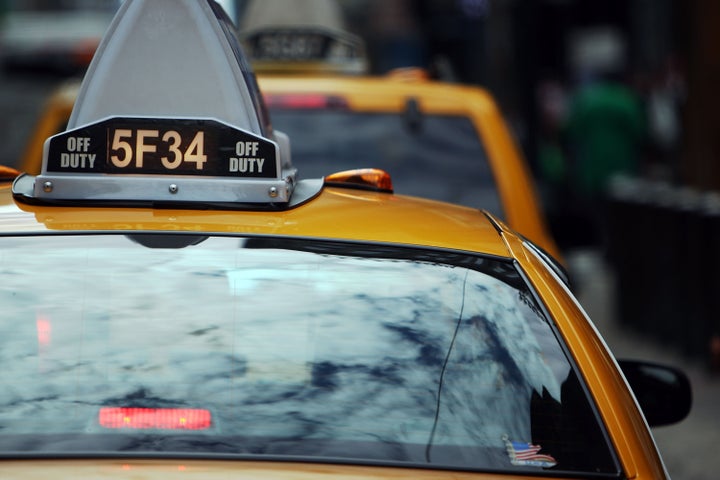
How can riders help New York City invent the "Taxi of Tomorrow"?
The Taxi of Yesterday. Once upon a time, when the boxy old Checker Cab was king, riding around New York in a taxi was something special. Fun, but more than that -- a journey, a passport, a feather in your cap. A cab ride, particularly in the early evening as the city lights came on, seemed like an ample cloak you could draw about you, your personal claim to a temporary but privileged vantage point from which to savor the city. The ride became a part of the street that for a while you could call your very own. The back seat was a throne that supported three people in stately and upright comfort, and two more could perch on fold-away jump seats. A Checker wasn't just roomy, it accommodated the human form: you could get in without ducking and sit without crouching or banging your knees. You felt welcomed and at ease inside, protected by its sturdy construction. In these circumstances, the mind shifted gears, and time itself seemed to expand. You could reflect on the day just gone by, look forward to the evening ahead, and drink in the dazzling patterns of the city.
The Taxi of Today. The Checker Motors Company of Kalamazoo, Michigan stopped making cabs in 1982, and the last surviving Checker was retired in 1999. Since then, because they have no guardian, half a million daily New York cab rides have been repeatedly degraded. That's because, throughout the country, the interests of millions of riders-in-cars have literally had to take a back seat to other concerns, casualties of what we could identify as the "politics of the passenger experience."
Basically cars are built for drivers, not for the driven. Back seats are for the also-ran: kids, grandparents, and guests -- the disenfranchised participants in any car-buying transaction. So back seats are generally an afterthought: uncomfortable and cramped, the ride is bumpy and deprived of much of a view. Despite a 1940s regulation requiring all of New York's taxis to be "purpose-built cabs, not consumer car conversions," exactly the opposite happened: two-thirds of New York taxis are converted Ford "Crown Vics" and about a third are converted minivans.
In New York this is compounded by the aftermath of the crimes and viciousness of the 1960s. Because drivers back then were getting repeatedly mugged and sometimes even murdered, all cabs today (unless they have installed a security camera) have bullet-proof plastic partitions between the front and back seats. So the back seat is now an isolated capsule, not just a place of neglect. Conversations between passengers and drivers have to be held in high-decibel (or cell-phone-level) shouts, and the view forward is almost totally impaired by paraphernalia (the driver's hack license and slots for stuffing through money) and by fun-house distortions, discolorations, and scratches in the plastic shields. On top of that -- although this is not a requirement -- everything in the back of a Crown Vic is black -- upholstery, floor mats, even door handles. The passenger experience approaches that of the bleakest car ride I ever took: years ago, the famous glass flowers from Harvard's Museum of Natural History were being brought to New York for an exhibit, and I was allowed, as a reporter, to accompany them from the airport to midtown. For some reason, the vehicle chosen for the trip was a hearse. Not the best choice: it was then I discovered that the back of a hearse has practically no suspension (and no handles on the inside of the doors). Who's going to complain?
The Taxi of Tomorrow. The New York City Taxi & Limousine Commission is promising that by 2014 new city cabs will once again be "purpose-built" (meaning they won't be regular cars) and that manufacturers will have to meet various criteria, including safety, fuel efficiency, access for people with disabilities, and what the press release calls "superior passenger experience." Great stuff -- but the available documentation gets vague when it comes to passenger experience specifics. Computer renderings for one of three announced finalists -- Karsan, a Turkish company (the other two are Ford and Nissan) -- show extra foldaway seats and what Karsan is calling a "panoramic glass roof." Sounds promising. But here is an opportunity to design something from-the-experience-out; we'll need mock-ups and prototypes we can test-ride, not renderings.
How would you recapture the pleasure and sense of adventure the Checker once gave? I'd say, at a minimum, build in anything that contributes to a sense of floating effortlessly through the city -- big windows; seats made for bodies, not parcels; cheerful colors. I'd love to hear your suggestions.